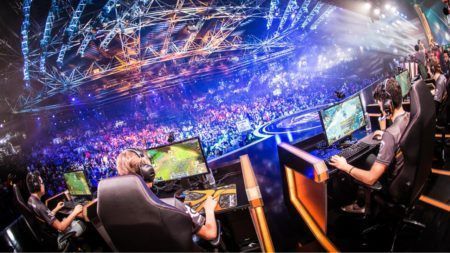The esports industry has been steadily growing in the past few years, and players are reaping the benefits of such growth.
Take, for example, players in the League of Legends (LoL) Championship Series (LCS), who earn an annual average salary of US$300,000, according to LCS commissioner and Riot Games senior manager Chris Greeley at this year’s GamesBeat Summit in Los Angeles, California.
Such salary figures would have been impossible when the LCS first started in 2013. But when the LCS turned into a franchise league in 2018, with teams paying $10 million each to Riot Games as a franchise fee just to participate, these high salaries started becoming a possibility.
A similar figure was revealed back in February last year when OpTic Gaming’s LoL general manager, Romain Bigeard, told LiquidLegends that the average player salary in the LCS was US$320,000.
While official salary figures for players in esports are, more often than not, kept secret, those for LCS players definitely rank among the highest of those that are known.
For comparison, prior to the inaugural season of the Overwatch League in 2018, OWL announced that the minimum salary for players competing in their first year is US$50,000. However, the Korean website Daily eSports later revealed that the average was actually between US$80,000 to US$120,000 for each player, with the increase being attributed to the competition between teams for the limited talent pool of experienced Overwatch players that were competing at the time.
Arguably the most prolific signing back then was that of then-17-year old Jay “sinatraa” Won, who signed a contract with the San Francisco Shock for US$150,000, as reported by ESPN.
But even that can seem like chump change for the biggest superstar in LoL, SK Telecom T1 midlaner Lee “Faker” Sang-hyeok, who competes in LoL’s South Korean league, League of Legends Champions Korea.
Aside from boasting the most prize money won from tournaments in LoL with a total of $1.175 million, he is also considered as one of the highest-paid players in all of esports. While the exact figures of Faker’s salary remain undisclosed, former South Korean StarCraft pro and current TV personality Hong “YellOw” Jin-ho claimed that Faker made a minimum of three billion won or approximately US$2.6 million a year.
Separate reports also claimed that Faker was offered US$2.5 million per year to re-sign with SK Telecom T1 following their third world championship win. Aside from his salary and tournament winnings, Faker also earns thousands of dollars more from sponsorships and revenue from his Twitch streams.
With franchising bringing in big money to esports leagues around the world, esports player salaries are already competing with those of professional athletes. For example, athletes on Major League Soccer (MLS) clubs earned an average of around US$316,000 in 2016, reported ESPN.
While esports player salaries still pale in comparison to those of NBA or high-profile soccer players, they are starting to climb there. It’s a sign that the esports industry is thriving too.
Chris “RiotChopper” Hopper, Head of North American Esports at Riot Games, thought as much in an interview with Forbes last year.
“These days, now that the path to pro is well established, and there are nearly 1,000 pros globally making a living off of playing League of Legends professionally, we look at player salaries continuing to rise and new player benefits (insurance, 401k, etc) as evidence of a healthy ecosystem,” said Hopper.
“It’s up to the teams to spend responsibly as they put together a competitive roster, but we’re happy to see the stars of our league getting rewarded for their efforts.”

